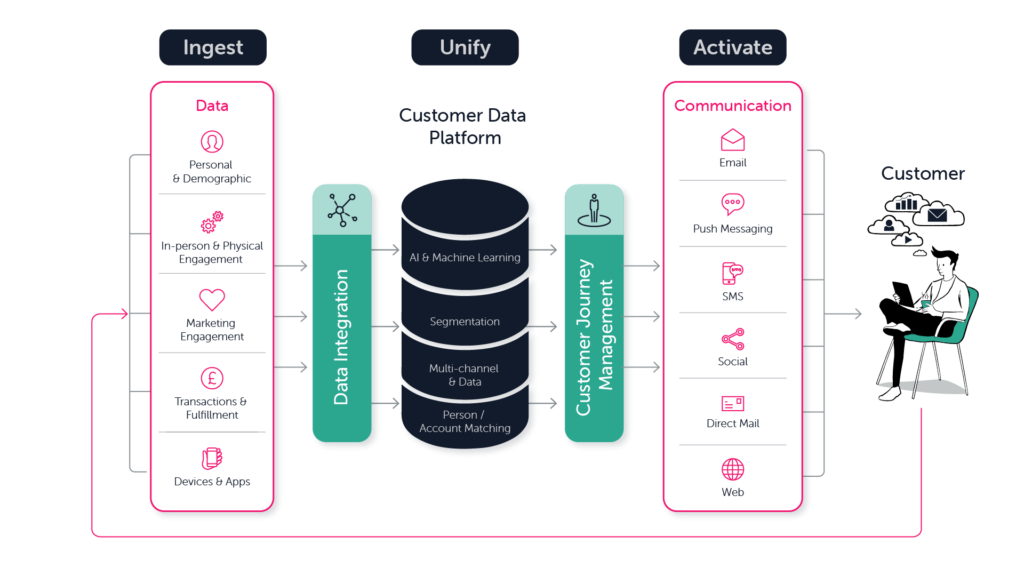Unveiling Marketing's Hidden Potential: Embracing the Power of Customer Data Platforms (CDPs)

In the contemporary realm of data-centric marketing, companies are increasingly exploring avenues to leverage customer data for a competitive advantage. Enter Customer Data Platforms (CDPs) – a game-changing solution that serves as a central hub for consolidating, analyzing, and activating customer data from diverse sources. Through the utilization of CDPs, enterprises can tap into a trove of insights, tailor customer experiences, and propel business expansion.

Primary Advantages of Deploying a CDP
• Comprehensive Customer Perspective: CDPs offer a holistic snapshot of each customer by consolidating data from multiple sources into a singular, exhaustive profile. This empowers marketers to comprehend customer behaviour, preferences, and purchasing patterns across all channels.
• Refined Customer Segmentation: Marketers can harness CDPs to craft sophisticated customer segments based on demographics, behaviour, and other pertinent criteria. This facilitates targeted marketing campaigns that resonate with specific customer groups, thereby enhancing campaign efficacy.
• Personalized Customer Connections: Powered by insights into individual customer preferences, CDPs empower marketers to craft personalized experiences across diverse touchpoints, including email marketing, website content, and product recommendations.
• Predictive Analytics and Customer Insights:CDPs facilitate advanced analytics, enabling marketers to discern patterns, forecast customer behaviour, and unearth concealed insights. This information can inform product development, refine marketing strategies, and enhance customer service initiatives.
• Streamlined Cross-Channel Marketing: CDPs dismantle siloed data across channels, allowing marketers to orchestrate seamless customer journeys across touchpoints. This ensures consistent messaging and a unified customer experience.
Considerations for CDP Implementation
1. Data Quality and Governance: Uphold data quality and institute robust data governance practices to uphold data accuracy and compliance with privacy regulations.
2. Integration with Existing Systems: Seamlessly integrate the CDP with prevailing marketing, sales, and customer service systems to optimize data flow and extract maximum value.
3. Clear Use Cases and Objectives: Clearly delineate use cases and objectives for the CDP to ensure alignment with strategic business goals and marketing initiatives.
4. Continuous Training and Adoption:Provide ongoing training and support to ensure marketing teams are adept at utilizing the functionalities of the CDP.
Unlocking Marketing Potential with CDPs
CDPs wield the potential to revolutionize marketing endeavours, enabling businesses to foster greater customer intimacy, drive engagement, and amplify revenue. By harnessing the prowess of customer data, organizations can craft personalized experiences, fine-tune marketing campaigns, and gain a competitive advantage in the dynamic digital marketplace. CDPs transcend being mere tools; they emerge as strategic assets empowering businesses to unlock the full potential of their customer data, paving the way for growth and success.

